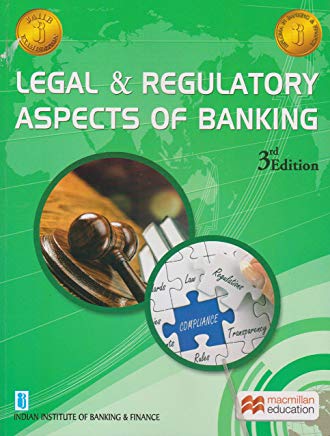JAIIB LRAB Unit 3 - Regulation Of Banking Business (Year: 2019)
The Banking Regulation Act empowers the Reserve Bank to issue directions to banking companies in public interest, in the interest of banking policy and in the interest of depositors.
Section 21 provides for the issue of directions to regulate loans and advances by banking companies. This may be done by regulating the purposes of lending, margins in respect of secured loans, rate of interest and terms and conditions of lending.
Section 35A gives wide general powers to issue directions. The Reserve Bank issues directions from time to time under Section 21 (read with Section 35 A) regulating acceptance of deposits and lending.
Under Section 21A of the Act, the rate of interest on loans and advances contracted between a bank and its customer is not liable to be reopened by a court of law.
Section 20 of the Act imposes restrictions on loans and advances to directors, and companies and firms in which directors are interested as director, partner, etc.
A banking company which is a scheduled bank has to maintain a certain percentage of the time and demand liabilities as cash reserve with the Reserve Bank under Section 42 of the Reserve Bank of India Act, as notified by the Reserve Bank from time to time.
Failure to do so renders the banking company liable to penalty. For non-scheduled banking companies, Section 18 of the BR Act provides for cash reserve.
Banking companies have also to maintain a certain percentage of their demand and time liabilities in liquid assets as stipulated under Section 24 of the BR Act. These assets may be maintained to the extent and in the form and manner as notified by the Reserve Bank. Apart from this, banking companies are required to maintain such assets in India at not less than seventy five per cent of demand and time liabilities as at the close of business of the last Friday of every quarter.
Banking companies also have to transfer to the reserve fund twenty per cent of their annual profits as disclosed in the profit and loss account.
Regulation of credit to different sectors of the economy is known as Selective Credit Control. While General Credit Controls operate on the cost and volume of credit, Selective credit controls aim at regulating the distribution or direction of bank resources to particulars sectors of the economy.
Selective Credit Control seeks to influence the demand for credit by
i. Making borrowing costly for certain purposes, which are relatively inessential
ii. By imposing stringent conditions on lending for such purposes
iii. By giving concessions for certain desired types of activities
The tools employed for exercising selective credit control are
i. Minimum margins for lending against selected commodities
ii. Ceiling on the levels of credit
iii. Charging minimum rate of interest on advances against specified commodities Scheduled Banks
A scheduled bank is a bank included in the second schedule of the RBI Act. Section 42(6) of the Act. RBI may include any bank in the second schedule
if it satisfies the following requirements.
a. It has paid-up capital and reserves of an aggregate value of not less than Rs. 5 Lakhs.
b. It satisfies the Reserve Bank that it affairs are not conducted in a manner detrimental to the interests of depositors; and
c. It is
(1) State cooperative Bank
(2) A company defined in section 3 of the companies act
(3) An institution notified by central govt.
Cash Reserve : The penalty which is payable by a banking company which is scheduled bank for failure to maintain cash reserve in any week for the first time is 3% of over bank rate. For 2nd time 5% over bank rate.
JAIIB Study Material
| JAIIB Paper 1 Study Material |
| JAIIB Paper 2 Study Material |
| JAIIB Paper 3 Study Material |


